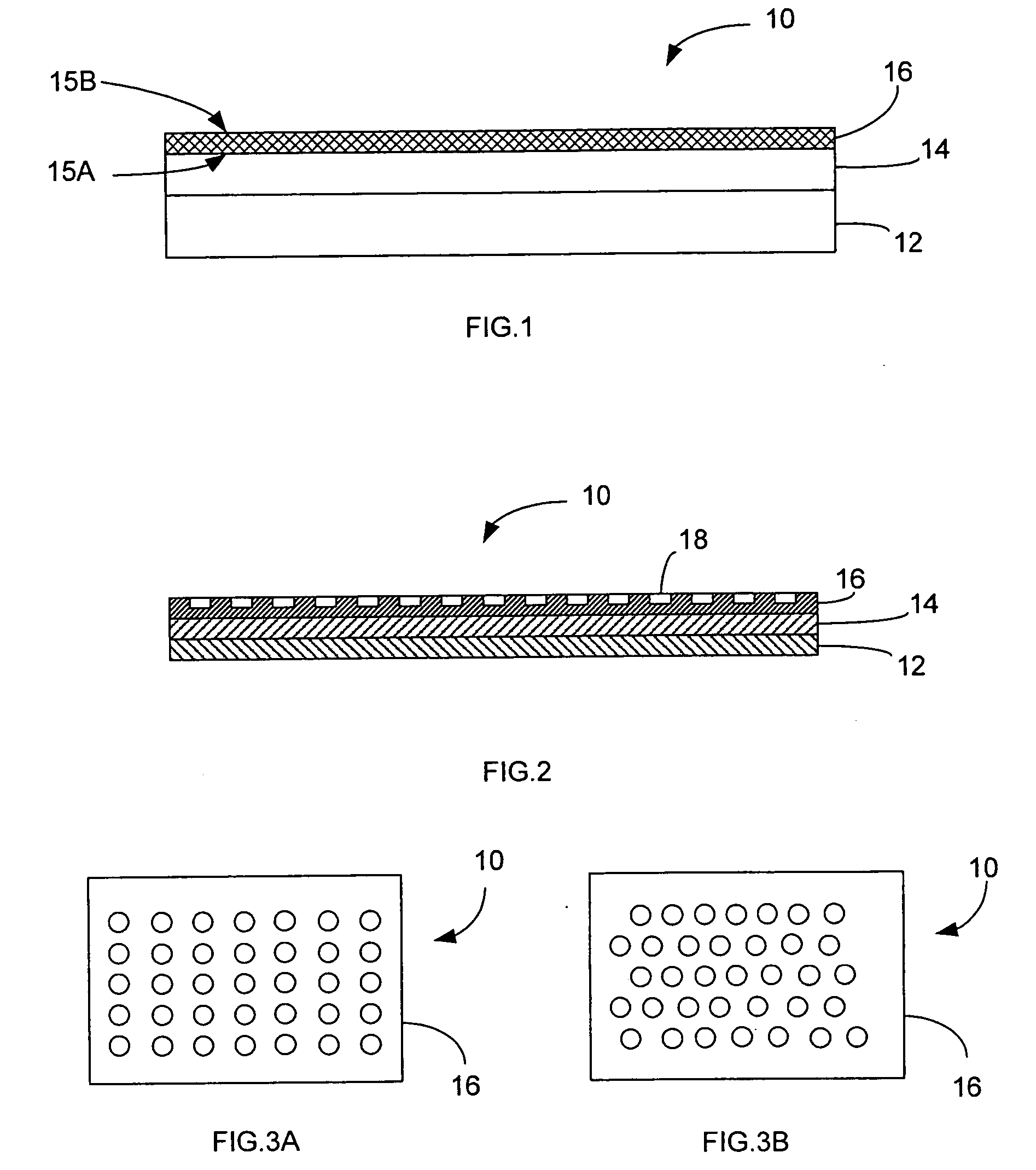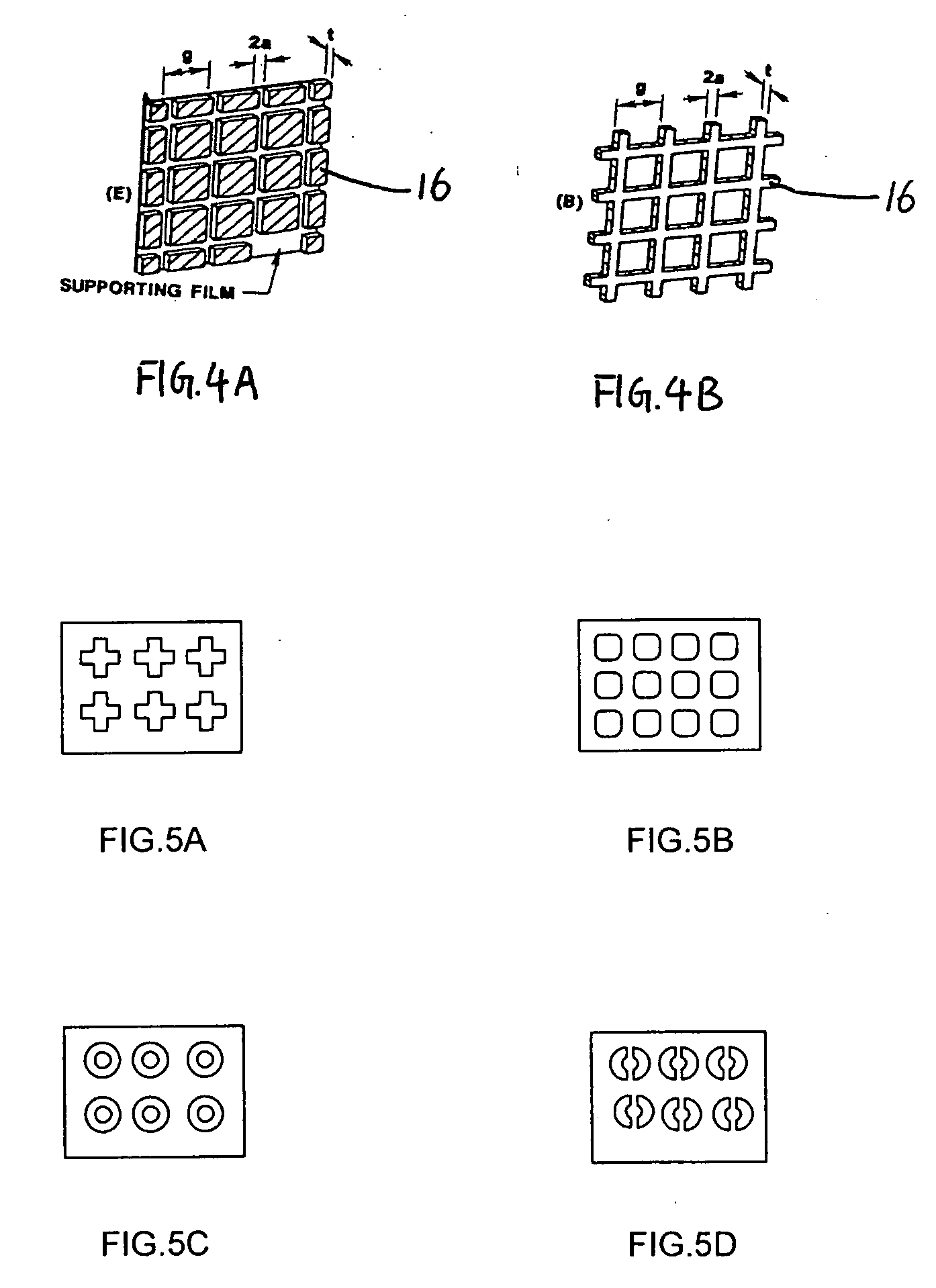Photonic crystal emitter, detector and sensor
a technology of emitters and crystals, applied in the field of micro-machined devices, can solve the problems of reduced optical energy received by the detector, complex sensors, and high cost, and achieve the effect of high stability
- Summary
- Abstract
- Description
- Claims
- Application Information
AI Technical Summary
Benefits of technology
Problems solved by technology
Method used
Image
Examples
example i
[0088] An infrared gas sensor embodying the present invention is schematically shown in FIG. 14. The infrared gas sensor utilizes a heated bolometer element, which employs a photonic bandgap structure, as both the source and the detector in an open path atmospheric gas measurement. The heated bolometer is a MEMS device as denoted by number 500, which is a thin silicon membrane with a gold coating. A repetitive pattern of holes are etched into the emitter surface. The repetitive pattern forms the 2-D photonic bandgap structure on the top surface of the MEMS device. The MEMS device is heated by passing an electrical current through the silicon layer, and the 2-D photonic bandgap coating emits a narrow line spectrum. The MEMS device also has particularly high absorption for the same wavelength it emits. The MEMS device 500 is placed opposite a mirror 502. In the absence of the monitored species (that absorb the electromagnetic energy at the emitted spectrum), the bolometer reaches radi...
example ii
[0089] An emitter device including a SiC layer coated with platinum is fabricated. FIG. 16A shows a top view of the device and FIG. 16B shows a side cross-sectional view. As seen in FIG. 16A, circular holes are etched into the SiC layer. The holes are distributed in a two-dimentional parallelogram lattice geometry. The diameter and the inter-spacing of the holes is about 2.5 μm. The depth of the holes is about 2 μm. The thickness of the platinum layer is less than 1 μm. As seen in the figures, the resulted holes may not be perfect circles. The metal recesses from the edge of some of the holes. The resulted device, upon heated by electrical current conducted to the SiC layer, emits / absorbs infrared light in a narrow wavelength band. Different embodiments with different inter-hole spacing are manufactured and tested. The peak wavelengths of the emissions are plotted as a function of the inter-hole spacing. As shown in FIG. 17, the peak wavelength of the emissions is proportional to th...
PUM
 Login to View More
Login to View More Abstract
Description
Claims
Application Information
 Login to View More
Login to View More - R&D
- Intellectual Property
- Life Sciences
- Materials
- Tech Scout
- Unparalleled Data Quality
- Higher Quality Content
- 60% Fewer Hallucinations
Browse by: Latest US Patents, China's latest patents, Technical Efficacy Thesaurus, Application Domain, Technology Topic, Popular Technical Reports.
© 2025 PatSnap. All rights reserved.Legal|Privacy policy|Modern Slavery Act Transparency Statement|Sitemap|About US| Contact US: help@patsnap.com



